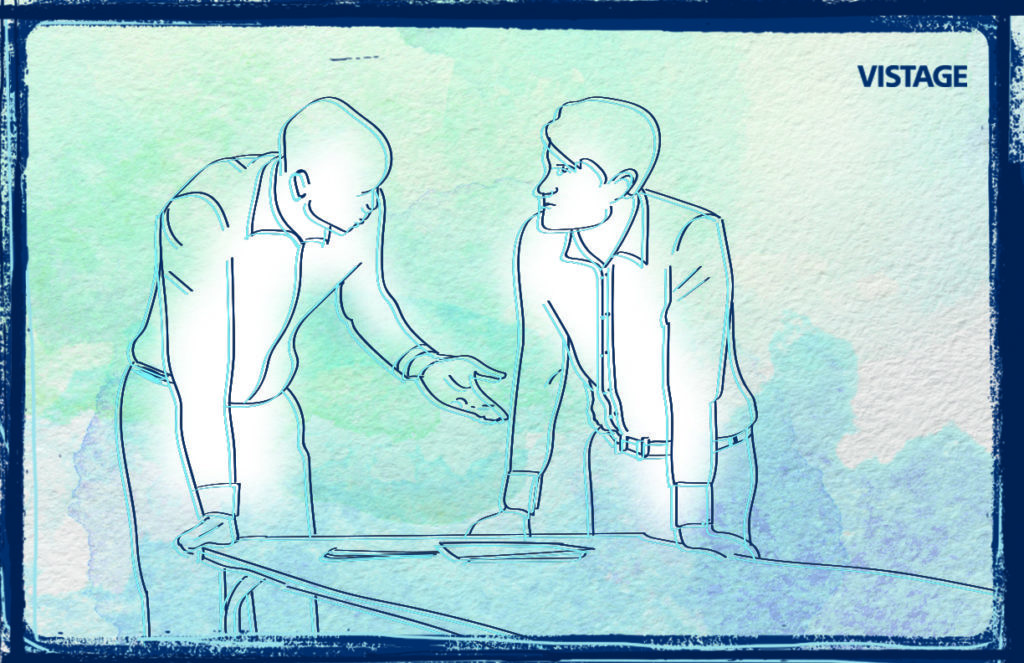7 questions with economist Dr. James Smith

After his popular Fridays with Vistage webinar, economist Dr. James Smith agreed to answer seven questions from our member audience on everything from China triggering a world recession to the economic impact of student loans.
Vistage: When do you project the next U.S. recession?
Dr. James Smith: I currently am forecasting the next U.S. recession to begin in May 2021. That would make this the longest expansion ever (it would break the 120-month, 10-year mark set by the March 1991-March 2001 one). It would be foretold by an inverted Treasury Yield Curve, which can be found on the “Market Digests” page in The Wall Street Journal. It’s on page C6 today, and is far from inverted. The reference in the attached is quite useful on this critically important leading indicator. The consensus is for the next recession to begin in 2018. I think the very slow expansion suggests a very long lived one.
V: Will China cause a great depression by year 2030?
JS: While China runs into huge problems in the 2050s as its population starts to decline (just like Japan’s today), it cannot cause a world recession, much less a Depression. I never waste time worrying about China. They march to a different drummer uniquely their own and that usually also benefits the rest of the world.
V: When is the best time to sell a company in next five years, based on economic cycles, assuming business will be profitable and grow at a steady mid single-digit space through that time?
JS: The best time to sell a company is when a potential buyer gives you “an offer you can’t refuse.” (Click to Tweet this) Beyond that, the answer is so dependent on the location and type of business that it’s nearly impossible to answer. A health or wealth related business should continue to get more valuable. An energy supply business owner should wait for those markets to become more robust as should an AG supplier. Interest rates will go up until the next recession, but that may or may not be a major factor in the decision. A housing-related business will do better every year until right after the Treasury Yield Curve inverts.
V: What do you recommend as the three business strategies small/midsize companies should consider both short and long term?
JS: My former UNC colleague Richard Levin wrote this book: Buy Low, Sell High, Collect Early and Pay Late: The Manager’s Guide to Financial Survival. I recommend it to any small business person looking for advice on strategies. Dick is a master.
V: We hear a lot about the “wealth gap” in the economy, sometimes referred to as the top 1% and everyone else. We also hear that much of the job growth is part-time, non-benefit type, hourly work, and that the “average American” is not doing well. The chart you showed in the webinar with the disposable income rising significantly in 2012 and then dropping through 2014 as a result of tax planning, seems to support that assertion, since presumably only “wealthy” people participated in that. Leaving politics aside, does this portend anything negative for the long term U.S. economy?
JS: This article by MIT Economics Prof. David Autor explains that most of the rise in inequality in the USA is the result of huge increases in the return on human capital, as embodied in more education and greater cognitive ability. Jesse Jackson is correct when he says: “Don’t be a fool, stay in school.” The article, found here, is quite readable and generally accepted by researchers in the field.
V: What do you project to be the impact of the large amount of the student loans?
JS: Rising disposable personal income is an unqualified “good thing” for the U.S. or any other capitalist, free market economy. We should be happy about that as it leads to record personal consumption expenditures (PCE), which account for about 68 percent of real GDP.
If people took out student loans to get a degree in a field that is in demand, then their higher earnings should allow them to repay the loan(s). Many students benefit from the competition to become part of the “Teach for America” program partly to pay off some part of their student loans.
V: Jobs are going up, that’s good… but are there any statistics that show the difference between existing companies that are expanding VERSUS new companies providing new opportunities? Are we growing as a country based on new companies?
JS: My hunch is the last question relates to this famous study from the Kauffman Foundation. That study demonstrates that almost all net new jobs come from firms less than five years old. Unfortunately, that study was published in 2010 and I am not aware of any update, although they may well exist. Every month, BLS publishes the “JOLTS” Report, which shows how many jobs are created and demolished in order to get the net gain reported in the monthly “Employment Situation” release. The latest such report shows that there were 61.2 million hires in the twelve months ending in November 2015, and 58.6 million separations. Thus, it took 119.8 million hires and separations to achieve a net gain of 2.6 million new non-farm payroll jobs. Attributing all or most of those to firms by their age, industry or location is a very complicated project.
Connect with Vistage on Facebook, Twitter and LinkedIn to be notified of future Fridays with Vistage webinars.
Category : Economic / Future Trends

